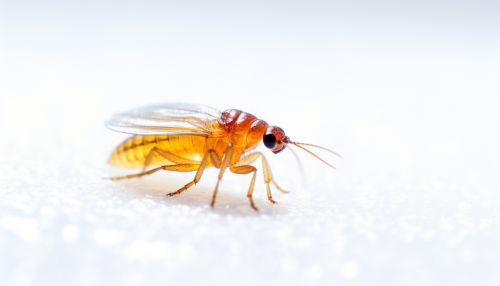Snow Flea
Introduction
Snow fleas, also known as springtails (Collembola), are a group of arthropods that are commonly found in soil, leaf litter, and other decaying material. Despite their common name, they are not true fleas, but are so named because of their similar size and jumping abilities.


Taxonomy and Evolution
Snow fleas belong to the order Collembola, which is part of the class Entognatha. This class also includes two other orders: Protura and Diplura. The Collembola are further divided into three families: Poduromorpha, Entomobryomorpha, and Symphypleona. The snow flea belongs to the family Hypogastruridae, which is part of the Poduromorpha.
Morphology and Anatomy
Snow fleas are small, typically measuring less than 6 millimeters in length. They are usually dark blue or black in color, which helps them absorb solar radiation and stay active in cold temperatures. They have a soft, rounded body and six legs, like all arthropods. Their most distinctive feature is a forked appendage called a furcula, which is located on the underside of their abdomen. This furcula is what allows them to jump great distances relative to their size.
Behavior and Ecology
Snow fleas are most commonly observed in the winter months, when they can be seen in large numbers on the surface of the snow. They are able to survive in these cold conditions due to a type of protein called an antifreeze protein, which prevents their body fluids from freezing. They feed on decaying plant material, fungi, and bacteria, playing a crucial role in nutrient cycling in ecosystems.
Reproduction and Life Cycle
Snow fleas reproduce sexually, with females laying eggs in the soil or leaf litter. The eggs hatch into larvae, which go through several instars before reaching adulthood. The life cycle of a snow flea can vary greatly depending on the species and environmental conditions, but generally ranges from a few weeks to several months.
Human Interaction and Impact
While they may be a nuisance when found in large numbers, snow fleas are generally harmless to humans and pets. They do not bite or transmit diseases, and their presence can actually be beneficial as they help to break down organic material and recycle nutrients in the soil.
